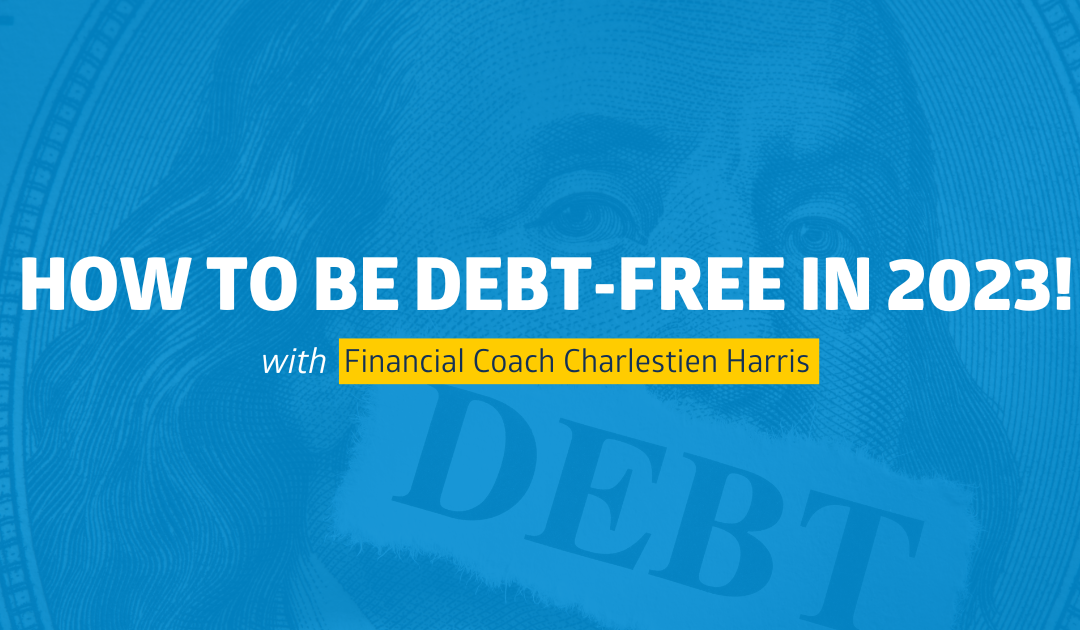By: Charlestien Harris
I know, I know, 2022 is not over yet – but we must look ahead and plan to eliminate some (or all) of the debt we may have accumulated over the holidays! Most everyone I know sets a goal of living debt free, and that is great if you plan to stick to it!
Since it is about to be a new year, I thought I would suggest a few ways you could begin the process of paying down the debt you already have. Paying down debt requires a lot of self-discipline and a plan that is realistic. Most debt can be paid down in two to three years, depending on the amount, if you are patient and stick to the plan you developed. But you must STOP sliding that card and adding to that debt! That is one of the most crucial steps in this process. The next step is to decide how much you will pay each creditor and how long it will take to pay each creditor. Try to set up a plan to be out of debt within two or three years.
Here are a few ways you can become debt-free in 2023.
- Try the Low Balance Method.
Pay off bills with the lowest balance due. For example, if you owe only two more payments on your car or refrigerator, you may want to pay those off early. Then, the money you used for those payments can go to pay off the next highest balance, and the next, and so on until you have paid them off one by one. Review your debt to see which bills you can realistically pay off in two or three months.
- Or the High Interest Method, which will save you money in the long run.
Try tackling those debts with the highest interest rates first. Interest charges can be very costly; interest on some credit cards can be more than 20%. Paying off debt with high interest rates can free up more of your money to put toward other bills. Which of your debts have the highest interest rates? This may be an indication of where you need to start to pay down your debt.
- Using the Percentage Method can be tricky.
This can be one of the most effective methods you choose if you decide to pay a percentage of each bill balance due. This is particularly useful for credit card bills, as paying only the minimum balances due could keep you in debt for a long time. Paying an additional 10% to each credit card balance should help you pay them off within one year. If you can afford to pay only an extra 5% of each credit card balance, then you should still be debt-free within two years. Check first to see if you have the money in your budget to make that additional payment amount.
- The New Plan Method involves having negotiation skills.
You may have to work with your creditors to set up a new payment plan for your debts. This idea works well if you have been a good customer that has been consistently paying your bills on time and on a regular basis. If you have not, then maybe try speaking with a supervisor of that department who will more than likely have the authority to make such an arrangement. Which creditors do you think you could talk to about a new payment plan? Once you have renegotiated a new plan, it is imperative that you adhere to the terms of the agreement.
- The Most Important Method involves making a personal decision.
It is about personal preferences when it comes to paying bills. This method involves making very personal decisions about whether to pay debts that are most important to your credit rating or to keep your family safe. There are some bills you need to pay – like rent or mortgage – or you will not have a place to live. If you don’t pay for utilities, they will be shut off. You may need to make a payment on your car to keep it from being repossessed. You may have loans that need attention to prevent your wages from being garnished. Other debts may not be as important, and can move to the back burner for a little while. If you owe on store and bank charge cards, try to make at least some sort of payment on them each month.
Sometimes you can put medical bills on hold, but notify the doctor or hospital of your plans and your intentions to pay in the future. With the new medical debt reporting guidelines in place, the credit bureaus have essentially stated that effective July 1, 2022, all medical collection debt that has been paid by the consumer in full will no longer be included on U.S. consumer credit reports. In addition, the time period before unpaid medical collection debt will appear on a consumer’s credit report is being increased from six months to one year, giving consumers more time to address their debt before it is reported on their credit file.
Whether you decide to use any of these suggested methods or not, getting out of debt is entirely up to you. Why not begin the year with a fresh start, so you can enjoy living a debt free life?
For more information on this and other financial topics, please email me at Charlestien.Harris@testbanksouthern.aceone.io, or call me at 662-624-5776.
Until next week – stay financially fit!

